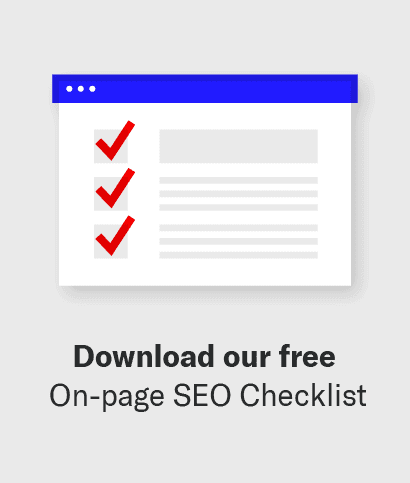Ranking well for a specific keyword is great. But, you might be missing opportunities to rank for multiple high-volume keywords within a singular topic.
In this video, I walk through the process of how to identify organic keywords you’re already ranking for without optimization, and why it can be valuable to build subsequent articles surrounding those keywords.
Video Transcription
Welcome to another episode of “Content & Links.” Today I want to talk to you about the land and expand strategy for keyword research and SEO. One thing that is increasingly prevalent in SEO is the idea of topics rather than keywords.
The reason that is the case is because Google is getting increasingly smarter about understanding what an article is about and how it crosses over to many different keywords. Many people are trying to solve for the topic rather than a solo keyword, as they had in the past. Of course, this makes sense, but that doesn’t mean we should completely ignore the value of keywords and the sub-segmentation that can happen around topics.
In practice, one thing I would suggest you do is, if you have an article that is ranking very well for something that has a lot of keywords, there’s a potential opportunity to functionally land, get those good rankings at the top section for probably whatever that main focus was of that topic. Then, drill down underneath that and look at the many keywords it’s ranking for and see if there’s actually other opportunity to build subsequent articles off of that.
Ahrefs in particular is a great tool to actually uncover this. If I go to CreditCards.com and I look at their article on how to cancel a credit card without hurting your score, I see this article is performing quite well with 22,000 visitors a month and 3,000 organic keywords. This is probably a good range of keywords to look at for the reality that there might be opportunity on top of this.
If you go to the keyword section, specifically for this article, you will see the master list of every single keyword the article ranks for. What you can leverage this for is to see what keywords the site is relevant for and already ranking solidly for without optimization. We can look at this list, see what’s ranking in the 25 to 50-ish range, which probably means it’s not going to be ranking well any time soon for that article, but is still somewhat relevant for it.
Which means if we build a new article that is accurately targeted at it, we’ll probably be way more successful and rank really well. We can capture that additional opportunity without cannibalizing the other article. An example of this is we look at this “how to cancel a credit card” section. You go to their section on ranking, and go from around 25 to 50 as a starting point, and then sort by volume.
This is a good way to find low-hanging fruit of higher opportunity. If I do this and I scroll down, one of the first articles I see that, potentially CreditCards.com could create is “how to close a Chase account.” They rank 25 for that, as of this shooting, and 1,400 searches.
This article on “how to cancel a credit card” is not that relevant for “how to close a Chase account.” But, it could still be relevant for CreditCards.com if that path actually results in someone signing up for a credit card, in some way, a decent percentage of the time, which I imagine it might, as a decent argument, or at least from a top funnel perspective.
You could see how simply looking at this list, you’ll uncover new keywords and topics that you might not have easily done. If I’m CreditCards.com, I might have just done searches like credit cards phrase match or looked at competitors, and I probably would’ve missed “how to close a Chase account” because of that. So you can look through this list, see what makes sense to build a subsequent article for, and be quite successful.
Another example of this in action, we can look at their business credit card page, which is also ranking quite well for the main term, business credit card, and it has 3,300 keywords it’s ranking for as well. Performing quite well, super high traffic value. Kudos to them. And if you do the same process, look for keywords ranking 25 to 50, sort by volume, we can then look through this and see what might make sense to build another page for.
I see two specific examples off the bat that this page will not rank for pretty quickly, and it probably makes sense to make another page for. One is “how to get business credit.” This is more of a how-to article rather than best credit cards. It’s not really the same intent, and that’s probably why they’re ranking in the 20-ish range for this article right now.
If you do this search, they could easily build this. It is super relevant for them and probably high value as well, and they can surely rank for that with a new how-to type article that they create. And then the other good example is “best small business bank.” If they have lead-gen affiliate relationships set up for this, they can kind of create that setup and build a whole new article on the best small business bank and be able to rank for that and have the authority. Clearly, they do because they’re showing up for an article like this already in that 20-ish range.
So, hopefully, these examples give you some new ways of thinking about keyword opportunity and content opportunity through the land and expand strategy. If you like this video, please give it a thumbs up, subscribe, and let me know what you thought of it in the comments.








